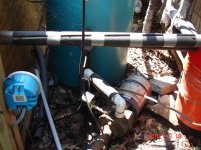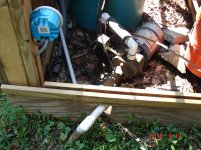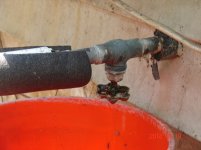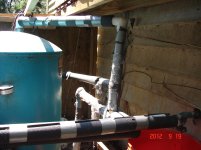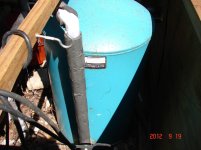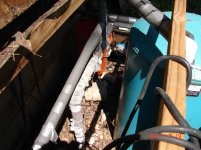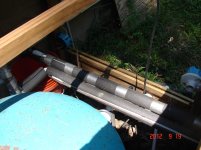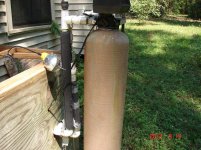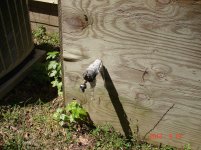meburdick
Platinum Member
I have low water pressure in my house to the point that if I flush a toilet I get practically no water anywhere else .
Stats : 2 story house. 2 full baths. clothes washer, dish washer, water heater, 3 outdoor spigots. Shallow well ( maybe 125 ft ) . Jet pump . Water tank rated at max. 75 psi ( I think non-bladder type ). Iron filter installed . 30/50 switch . Very old air volume control. Pressure gauge on tank ( shows normal 30/50 psi ). No nipple to pump air into tank.
What I 've done : I drained tank several times in the hope that tank was water logged ( No help ) . I changed from a 20/40 switch to the 30/50 switch ( slight, but unacceptable pressure gain ).
Only thing I can think of to change is the 30/50 switch to a 40/60 switch and replace old air volume control. Any reason I shouldn 't do this ?
Sure could use ya 'll 's advice and suggestions .
As far as I know, the term "water-logged" only refers to conditions found in bladder tanks. It means that the bladder has allowed water to rise to the upper portion of the tank that is normally "air only". When that happens, there is water on top of the bladder pushing it downward in addition to the air pressure. What happens is that the pump will "short cycle" because it doesn't actually fill the tank correctly and you don't get as much water in there as possible. The pressure in the lines will stay fairly constant except right before it cycles - the pressure drops quickly and then comes back when the pump is on.
You mentioned that you get good pressure when the pump is on and it has had chance to "catch up". I believe that your issue is likely in the fittings from the tank into the house lines being obstructed or restricted in some manner - most likely, right at the "T" where it all comes together. Something in there is acting as a restrictor to the water entering the line from the tank, and until / unless the full pressure of the pump can route to the house lines, there just isn't enough "push" there to up the house pressure (and the pump's flow primarly diverts to the tank).
Another thing that you have to look at is the size of the plumbing. You should likely have a 1" copper line coming from the tank to form the start of the household lines. From there, the lines should shrink to 3/4" for much of the run and then down to 1/2" for the taps. If you don't have a way to restrict the flow slightly at the exit points, turning any one tap on will often drop the household pressure pretty significantly.
